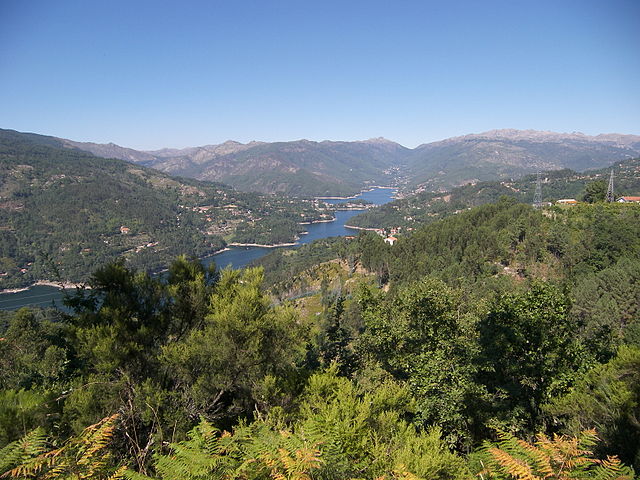Póvoa de Varzim is a Portuguese city in Northern Portugal and sub-region of Greater Porto, 30 km (18.6 mi) from its city centre. It sits in a sandy coastal plain, a cuspate foreland, halfway between the Minho and Douro rivers. In 2001, there were 63,470 inhabitants, with 42,396 living in the city proper. The city expanded southwards, to Vila do Conde, and there are about 100,000 inhabitants in the urban area alone. It is the seventh-largest urban agglomeration in Portugal and the third largest in Northern Portugal.
Clockwise from top: Nova Póvoa, Rua Santos Minho, Touro, the City Park, Lagoa Beach, Senhora das Dores Church, and Praça do Almada.
The first granite buildings appeared in the 5th century BC.
Poveiro boats in the Port of Póvoa de Varzim; the dispute between the fief's overlords and the Portuguese kings led to the establishment of the municipality in 1308.
Mid-19th century skyline as seen from Ribeira shipyard, located in the port of Póvoa de Varzim.
The North Region or Northern Portugal is the most populous region in Portugal, ahead of Lisbon, and the third most extensive by area. The region has 3,576,205 inhabitants according to the 2017 census, and its area is 21,278 kilometres (13,222 mi) with a density of 173 inhabitants per square kilometre. It is one of five regions of Mainland Portugal. Its main population center is the urban area of Porto, with about one million inhabitants; it includes a larger political metropolitan region with 1.8 million, and an urban-metropolitan agglomeration with 2.99 million inhabitants, including Porto and neighboring cities, such as Braga, Guimarães and Póvoa de Varzim. The Commission of Regional Coordination of the North (CCDR-N) is the agency that coordinates environmental policies, land-use planning, cities and the overall development of this region, supporting local governments and associations.
The Douro Valley, where port wine is produced
Cávado river in Peneda-Gerês National Park, an area with expressive rainfall.
Northern Littoral Natural Park in Esposende.
The inland Douro Valley area is exposed to hot summers and seasonal aridity.








